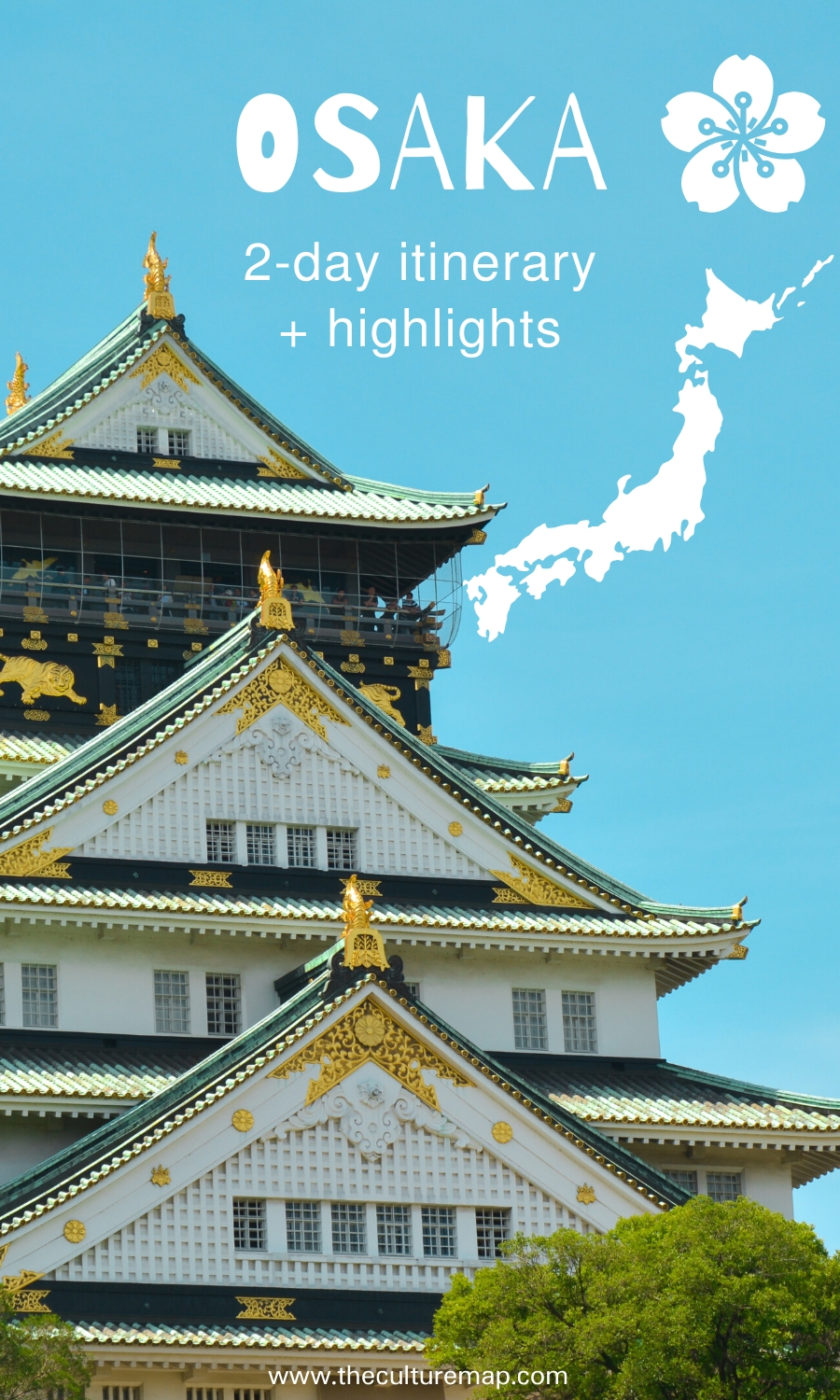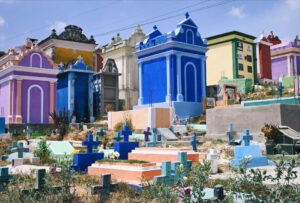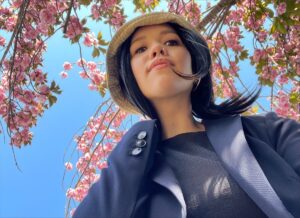Author
Hannah Cook has been living and working in Osaka, Japan for the last 2 years. She enjoys seeing and trying new things and has been doing her best to experience everything Japan has to offer.
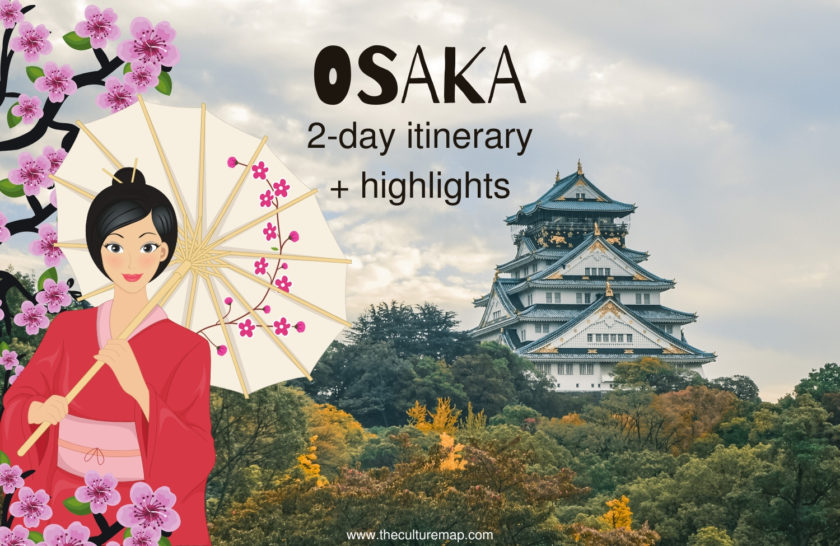
Osaka is regularly seen as the middle child in the Golden Route of Tokyo-Osaka-Kyoto. Not as big as Tokyo, but not as traditional as Kyoto. However, there is much more to Osaka than meets the eye, especially with a little exploration.
Osaka city is the capital of Osaka prefecture. It is the biggest city in the Kansai region and the second-largest city in Japan. Over time, Osaka has carved out a distinct personality for itself. It is often referred to as ‘the kitchen of Japan’ due to its number of ‘soul foods’. It is well-known within Japan for the range of foods and hospitality. This hospitality also refers to the people of Osaka, who are known for being very warm, friendly and welcoming. Spending time in Osaka shows that this reputation of being open, friendly and full of good food is well-deserved.
Where to Stay in Osaka
There are thousand of hotels to choose from in Osaka. If you’re looking to treat yourself then I recommend Konjaku-So Osaka Castle South. Located in a quiet area, this stylish inn feels like an oasis away from the city. Rooms are equipped with a small garden and an outdoor sheltered bathtub. Perfect after a long day of sightseeing.
If you’re looking for something more affordable with great accessibility, I recommend choosing one within the Umeda area. Hotel Dans Le Coeur is a recent opening, close to Osaka station, but without the loud noise of traffic and trains. My parents stayed in this hotel on their most recent visit and were happy with their stay and the service provided.
There are also many Airbnbs in Osaka, although those close to Umeda are likely to be expensive. However, it is possible to get a reasonably-priced Airbnb within one or two train stops of Umeda. On my first trip to Osaka, I chose an Airbnb three stops from Umeda, at a reasonably-sized apartment and I was very happy. Something to keep in mind using Airbnb is a recent law passed requiring Airbnbs to check passports of international visitors. Therefore, it is likely you will be asked to send a copy of your passport ahead of time.
How to spend two days in Osaka
Day 1
Osaka Castle Park
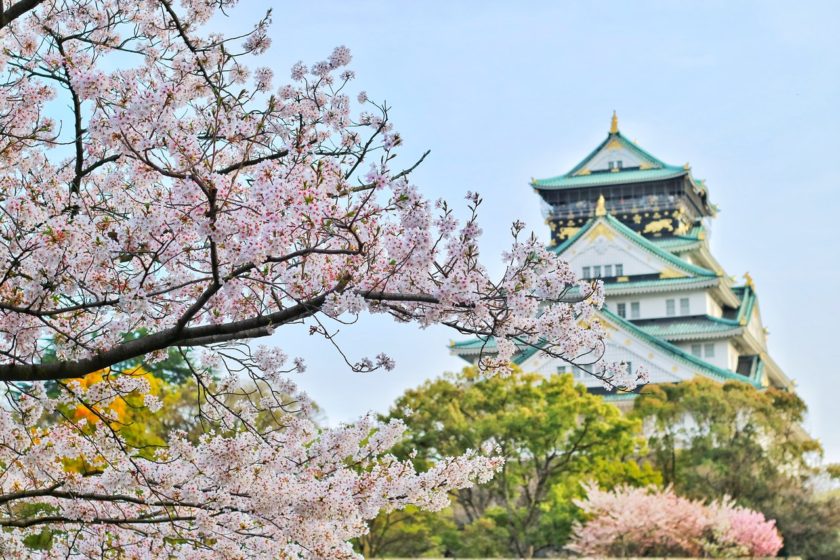
Osaka Castle and the surrounding park are always one of the first recommendations for anyone visiting Osaka, and for good reason. The park is located close to the centre of the city and is designed to be beautiful in all seasons. There are a range of different trees and flowers, including the famous cherry blossoms and plum trees.
In the centre of the park is Osaka Castle. This castle is one of the most famous in Japan. It has been reconstructed multiple times since it was first built in the 1500s, and currently, the inside contains a museum telling the history of Osaka Castle and displaying historical objects. At the top of the castle, there is a 360 degree balcony which gives the viewer a panoramic view of Osaka. Osaka castle is one of the most popular tourist attractions in Osaka, and no visit would be complete without seeing it.
Shi-tennoji Temple
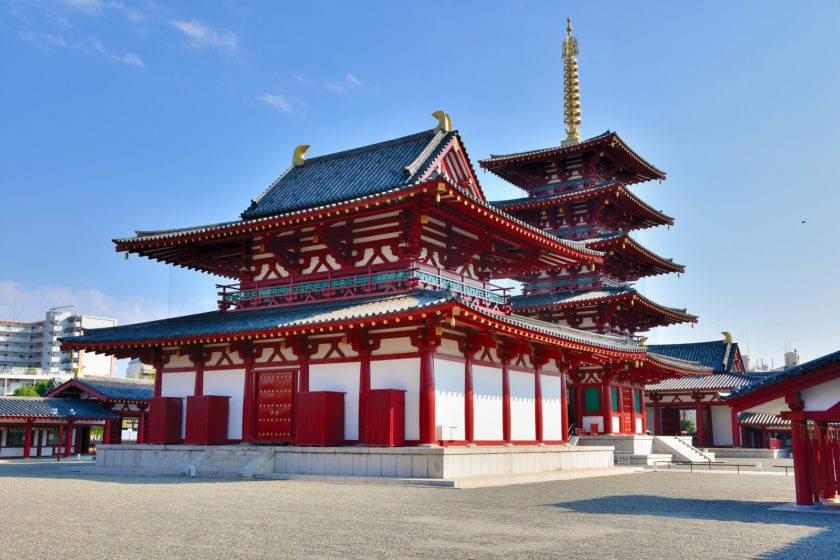
Continuing along the historical journey, next is Shi-tennoji Temple. This is Japan’s oldest Buddhist temple and was first built in 59AD. It marks the introduction of Buddhism to Japan. After entering the Gokurakumon, or Paradise Gate, there are a number of different temple buildings to see. One of the main attractions is a 5-storied pagoda, which visitors can enter. No photos are allowed inside the pagoda, or from the windows at the top, so it truly is unique.
There is a nearby museum, known as the Treasure House, which displays various documents, statues, paintings and artifacts from the temple’s history. Shi-tennoji temple is a key part of not only Osaka, but Japan’s cultural history and identity.
Shinsaibashi
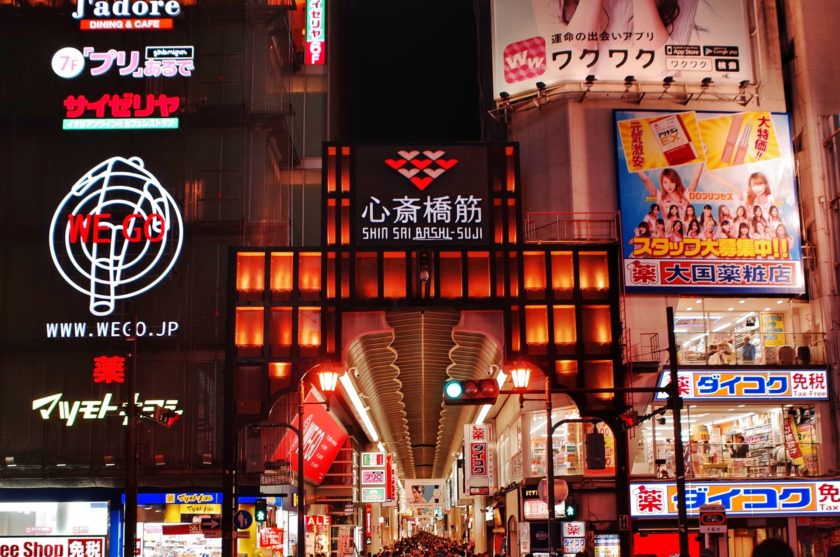
After a walk through history, it’s time for something more modern and Shinsaibashi does not disappoint. Shinsaibashi is one of the most popular shopping areas in Osaka and Shinsaibashi-suji is the main shopping street. It is about 600m long, and lined on both sides with an array of shops. 600m might not sound like much, but Shinsaibashi-suji has many intersecting streets, all filled with yet more shops, restaurants and more. After living in Osaka for 2 years I still haven’t seen everything Shinsaibashi has to offer.
Dotonbori/Namba
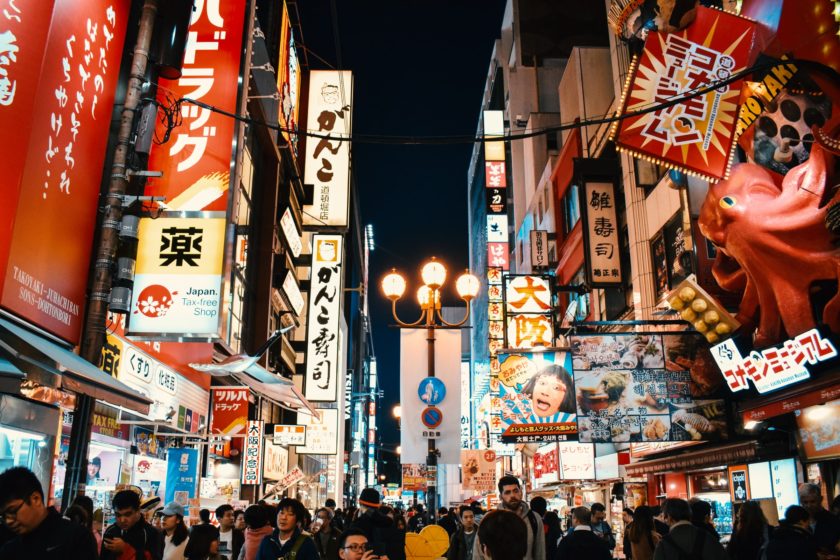
One end of Shinsaibashi-suji is located at the Dotonbori canal, another of Osaka’s most famous attractions. Dotonbori is a canal leading through the city. The area is famous for its bright lights and signs. The most famous of these is the ‘Glico man’ sign. When crossing the bridge from Shinsaibashi, it is usual to see a crowd of people around one side of the bridge, all here to see the Glico man. It is an advertisement for Glico candy which has been in place for over 80 years, albeit with upgrades.
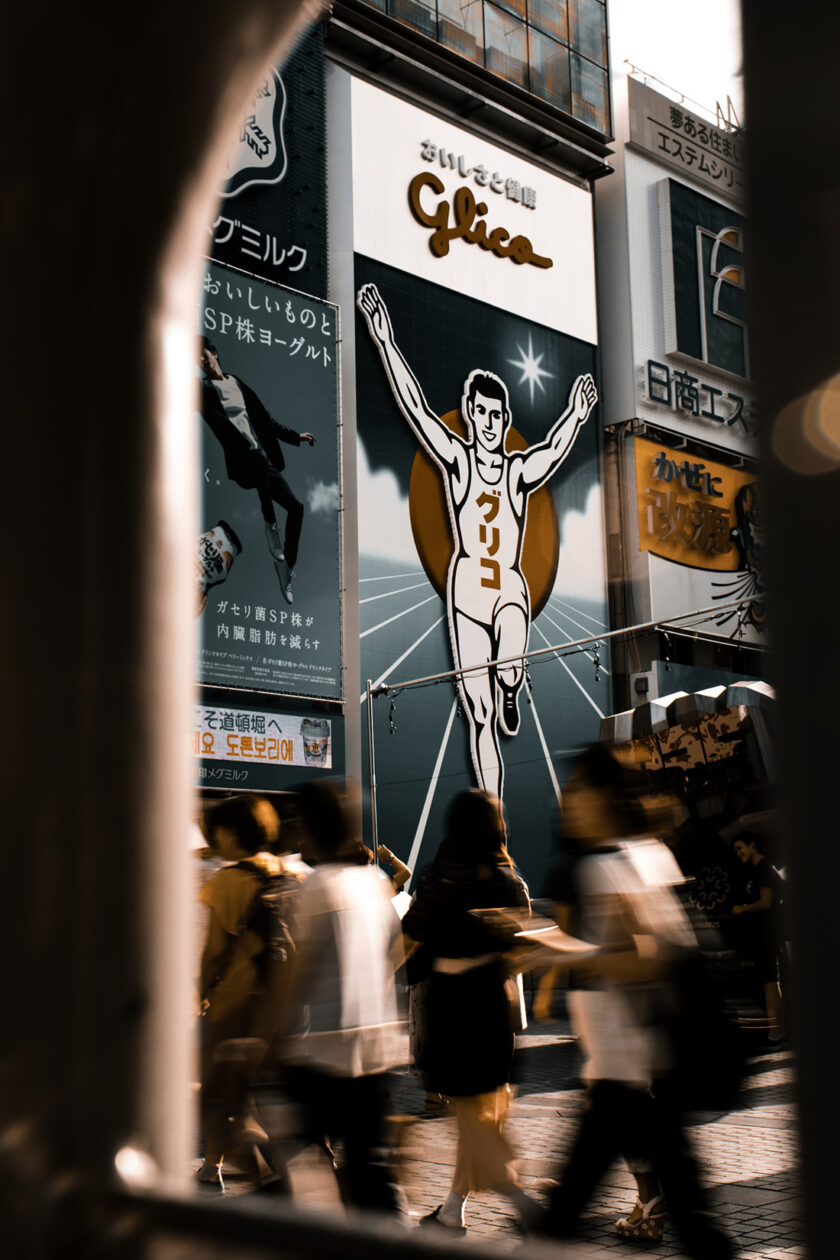
This is the perfect area to be in for dinner, as it is the entertainment district of Osaka. Dotonbori is filled with restaurants selling all types of food, many of them with large animals or mascots on the outside of their restaurant. The crab restaurant is particularly famous, but they are all known to be good restaurants. In fact, the area gave rise to the term ‘Kuidaore’, meaning ‘eat till you drop’.
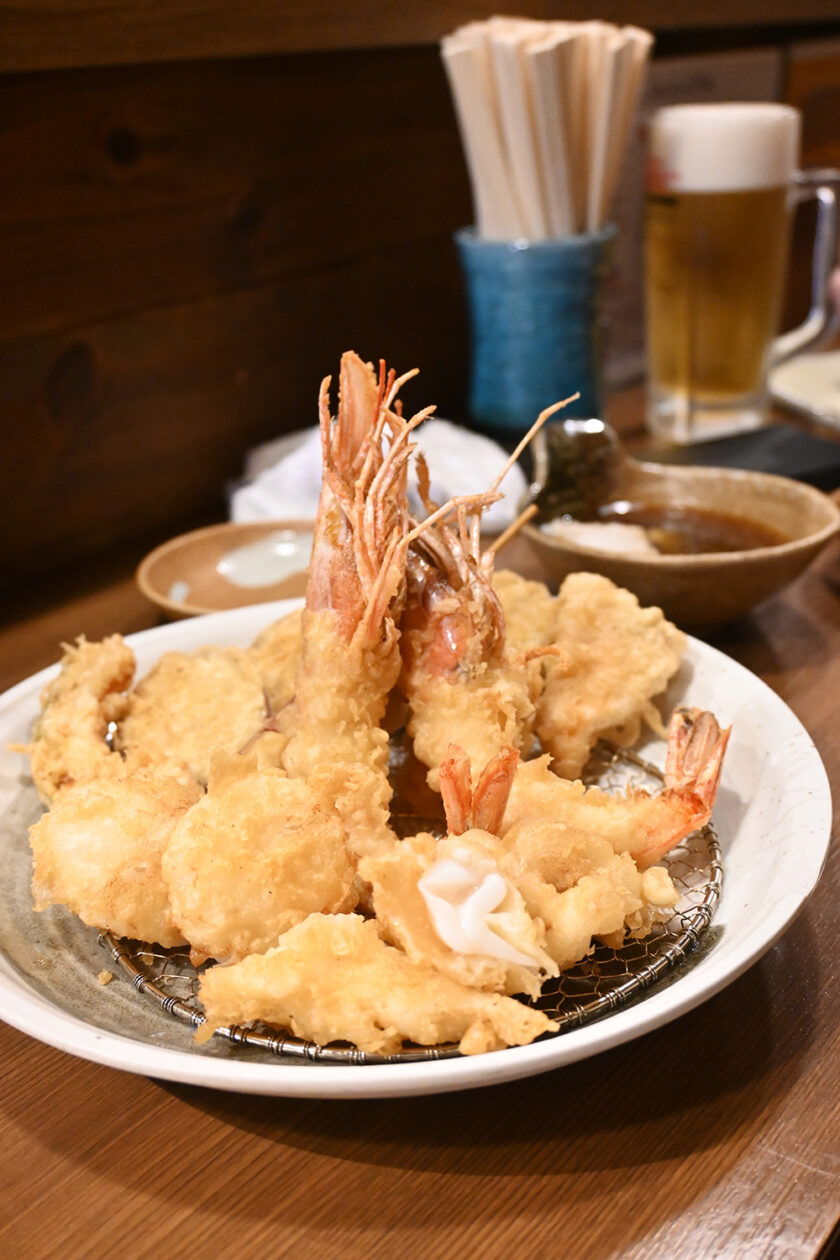
If you love tempura, I recommend Tempura Tarojiro. As the name suggests, it specialises in tempura, and it’s among the best you’ll find in the city.
Further reading: Dotonbori in Osaka: A fusion of food and flashing neon lights
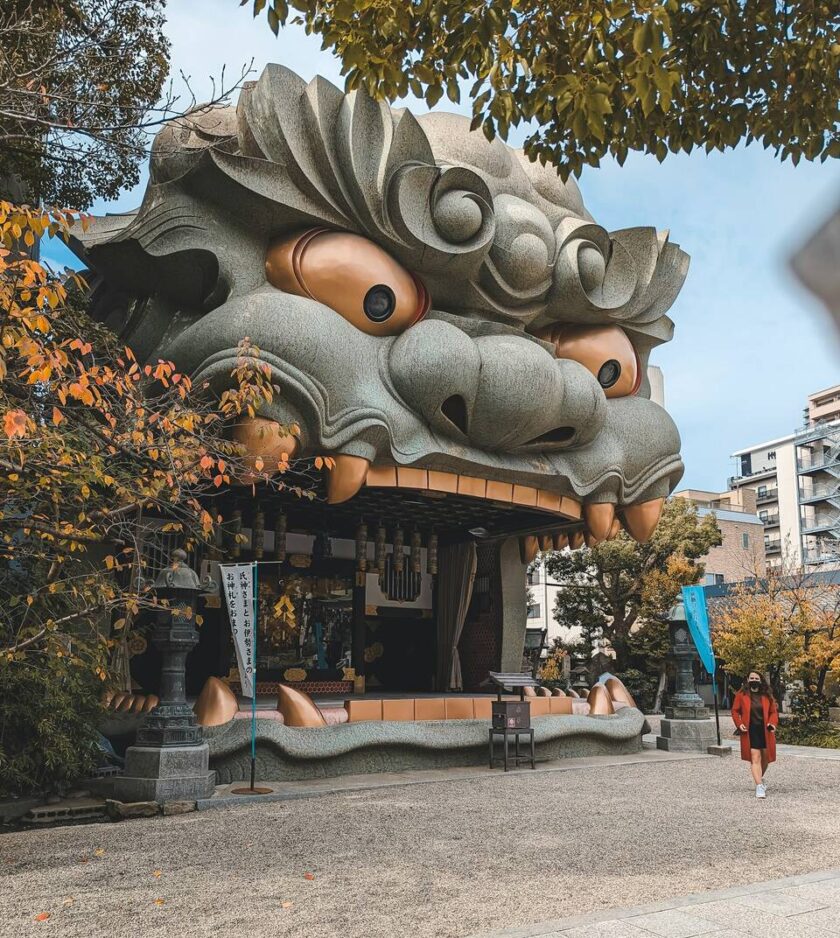
Before taking in the sights and sounds of Dontonbori, and settling in for dinner, I suggest visiting nearby Namba Yasaka Shrine – a short walk from busy Nankai Station or a 15 minutes’ walk from Dotonburi. This shrine is known for the quirky Shishiden (Lion’s Hall).
It is believed that the lion’s mouth swallows evil spirits, as well bestowing good fortune. Many worshippers visit the shrine to pray for academic improvement, job offers, and success in examinations.
Day 2
Umeda
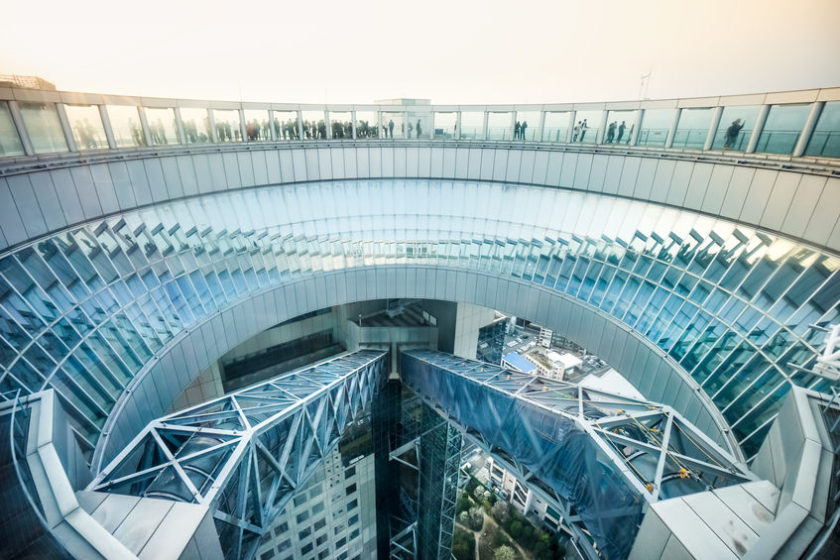
Umeda is one of the main business districts of Osaka and is the daytime cousin to the Dotonbori/Shinsaibashi area.
While Namba really comes alive in the evening, Umeda is a bustling business hub. Some of my favourite shopping places are the Lucua towers. These are two shopping buildings, located in front of Osaka station. In the larger, more open shopping centres or areas, I often find it easy to feel a sense of fomo. I can’t possibly visit every store, and what if the perfect thing is just around the corner? In the Lucua towers, each floor is limited to around 5-10 stores, making it a lot easier to handle.
Below the station, there is a large food hall, making it the perfect place for a late breakfast or morning tea. For panoramic views of Osaka stroll over to Umeda Sky Building, an iconic architectural landmark that has a 360° observational deck.
Expo Park
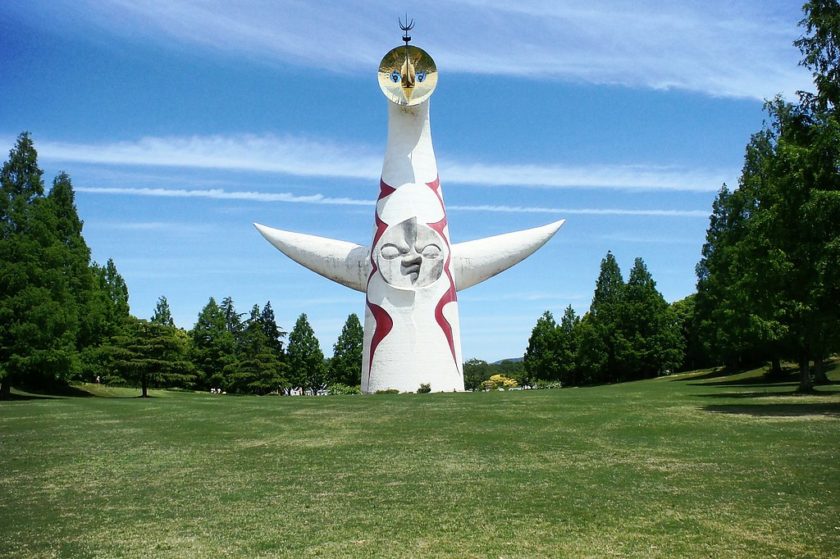
Expo ’70 Commemorative Park, often shortened to Expo Park, is a huge park that was built on the site of the 1970 World Exposition. One of the key features is the ‘Tower of the Sun’, a massive sculpture with a face. It is located in the centre of the park and is a good reference point, as it is easy to get lost among the many attractions.
There are three museums, a number of entertainment facilities and cafes dotted throughout the park. There are often events held at the park, sometimes concurrently. On my most recent visit, I was there to see the ‘Cosmos Festival’, an exhibition of the park’s cosmos flower fields. At the same time, a cheese & wine festival and an ice-cream festival were also being held in other parts of the park. There are flower fields, forest paths, bamboo groves and the park offers a slice of nature in the city.
Shinsekai
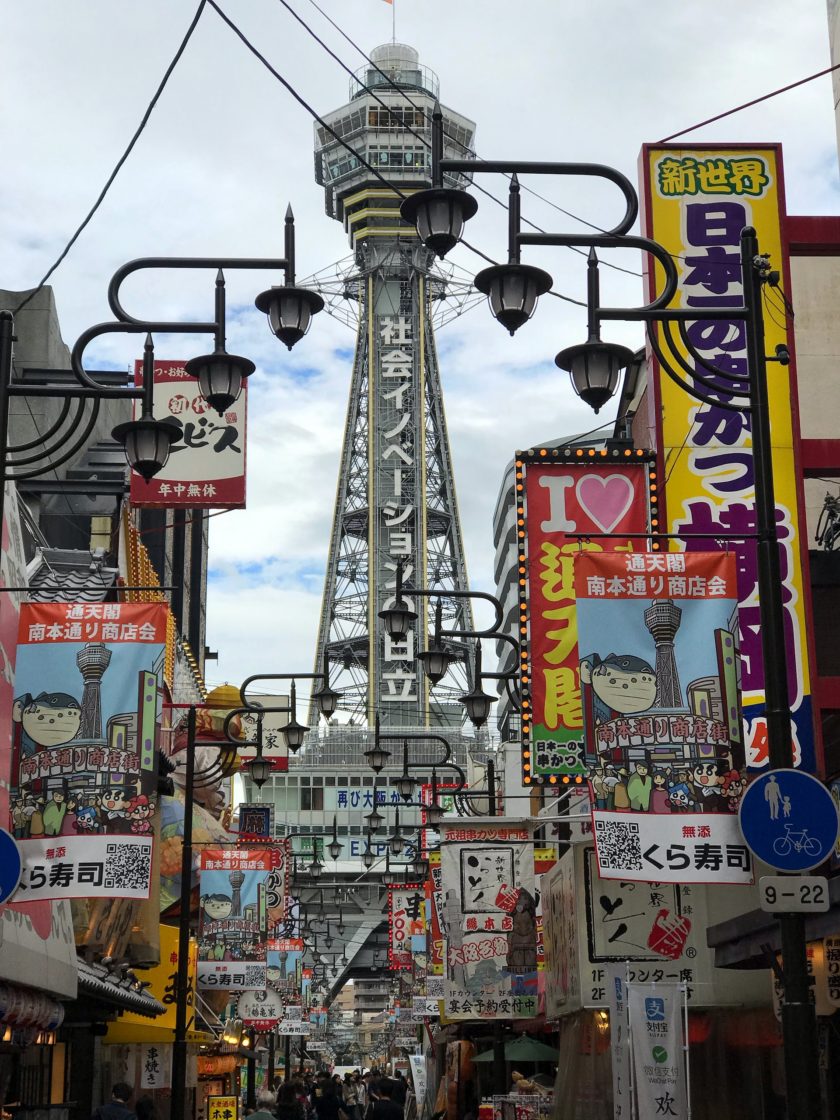
Shinsekai is an area of Osaka that was a key tourist area in the early 20th Century. It has since fallen out of favour, but retains its old-world charm. It was designed to be a mix of Paris and New York, a fashionable cosmopolitan area, but due to minimal renovation after WWII, became unpopular among Japanese people. It still has a lot of the features of pre-90’s-boom Japan, and walking through Shinsekai gives a retro, nostalgic feel. It is a period of history many Japanese people are not interested in – not old enough to be historic, not new enough to be modern. But to international visitors, it is an interesting glimpse into the past.
Further reading: Shinsekai: Osaka’s most weird and wacky district
Spaworld
After two long, busy days, Spaworld is the perfect answer. Spaworld is a super-sento, a large, multi-floor, artificial onsen. It has many floors, but the 4th and 6th floor are the most important. These are separated into the ‘Asian Zone’ (6th floor) and the ‘European Zone’ (4th floor). Each ‘zone’ has a number of onsen-like baths, with the architecture, décor and bath type inspired by different countries from the area. The European zone includes Finland spas with accompanying saunas, a Blue Grotto cave bath, a Greek-inspired bath and many more. The Asian zone has a few Japanese onsen-style baths, a Bali-inspired bath and a Hinoki (Japanese cypress) bath.
The floors are separated by gender, with a different gender using each floor on alternating months. Within a short time it is easy to relax into the experience and enjoy the baths and the variety. Spend your time relaxing in the hot water, and if you feel like pampering yourself further, indulge in one of the beauty treatments they offer. I promise by the end you will be ready for the best sleep ever and wake up with the softest skin ever.
Want to join a foodie tour of Osaka?
Want to experience the tastes and flavours and Osaka like a local? Why not join a foodie tour with a local guide?
Below I’ve selected two tours for you to consider!
Final thoughts
Osaka is a city of many faces. From the food culture to parks to the historical sites, it has a little bit of everything. It is perhaps this lack of one defining feature that leads to it often being overlooked in favour of traditional Kyoto or modern Tokyo. However, I believe this variety gives it the ability to be everything to everyone. No matter what type of traveller you are, there is something for you in Osaka.
